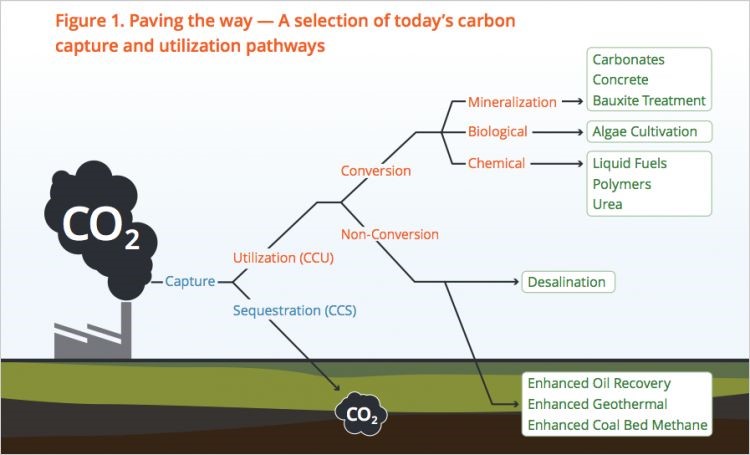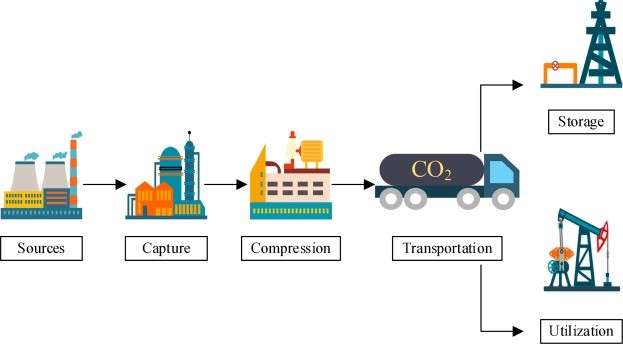By Mg. Han Tin
The fifth anniversary of the Paris climate accord, which more than 190 countries signed on to in 2015, was held virtual online on Dec.12, 2020.
Speaking at the opening of the Climate Summit, UN chief Antonio Guterres called on governments to declare a “state of climate emergency” and urged countries that had already announced net-zero targets to make good on their promises and to accelerate emissions cuts in line with the science to slash carbon pollution as they recover from the COVID-19 pandemic. Guterres warned that nations’ current commitments were “far from enough” to limit temperature rises to 1.5C degrees Celsius. He says that “If we don’t change course, we may be headed for a catastrophic temperature rise of more than 3.0C degrees Celsius. That is why today, I call on all leaders worldwide to declare a State of Climate Emergency in their countries until carbon neutrality is reached.” He added that emissions must fall 7.6 per cent annually through 2030 to keep the temperature cap by 1.5C, and net-zero greenhouse emissions must be met by 2050. He also said that “Climate action is the barometer of leadership in today’s world. It is what people and planet need at this time”, and G20 nations are responsible for the lion’s share of carbon pollution.
The European Union has made a commitment to become climate-neutral that is with net-zero greenhouse emissions, by 2050. PM Yoshihide Suga pledges that Japan will become carbon neutral by 2050. PM Justin Trudeau has unveiled his plans for achieving net-zero emissions in Canada by 2050.
PM Boris Johnson promises to cut the UK’s emissions by at least 68% from 1990 levels by 2030 and to set on the path to net-zero by 2050. US president-elect Joe Biden has set the goal of “net-zero emissions, economy-wide, by no later than 2050.” Corporate commitments to sustainable growth and net-zero emissions are on the rise. More than 60 countries have pledged to have a net carbon footprint of zero by 2050.
The Paris Agreement is a landmark environmental accord that was adopted in 2015 to address climate change and its negative impacts. It ostensibly requires the signed nations to substantially reduce global greenhouse gas emissions and enjoined the limitation of the global temperature increase in this 21st. Century to “well below” 2C degrees Celsius (3.6 Fahrenheit) above the pre-industrial (1850 – 1900) levels, (i.e., before the Industrial Revolution).
Therefore the countries will have to pursue efforts to limit the increase to 1.5C.
There is at least a one in five chance of it temporarily exceeding 1.5C by 2024. According to the UN’s World Meteorological Organization (WMO) provisional 2020 State of the Global Climate report, which is based on temperature data from January to October (the final 2020 report will be published in March 2021), the past six years, 2015 to 2020, are the hottest years since modern records began in 1850. The average global temperature in 2020 is set to be about 1.2C above the pre-industrial level and is the second hottest year ever said the WMO. It is obvious that, in 2020, we saw new extreme temperatures on the land, sea, and especially in the Arctic. Wildfires consumed vast areas in Australia, Siberia, the US west coast and South America. Flooding in parts of US east coast, Africa and Southeast Asia led to massive population displacement and undermined food security for millions. The heat in northern Siberia reached 38C at Verkhoyansk on June 20/ 2020, provisionally the highest known temperature anywhere north of the Arctic Circle. And recently, the sea level has risen at a higher rate due partly to the increased melting of ice sheets in Greenland and Antarctica. An eventuality that scientists warn will expose some 350 million additional people to drought and push roughly 120 million people into extreme poverty by 2030.
Carbon neutrality means having a balance between emitting carbon and absorbing carbon from the atmosphere in carbon sinks. A carbon sink is any system that absorbs more carbon than it emits. The main natural carbon sinks are soil, forests, and oceans. Carbon Offsetting is another way to reduce emissions and to pursue carbon neutrality, which is to offset emissions made in one sector by reducing them somewhere else. This can be done through investment in renewable energy, the energy that is collected from renewable resources, which are naturally replenished on a human timescale, including carbon-neutral sources like sunlight, wind, rain, tides, waves, and geothermal heat. Net-zero emissions mean that all emissions produced are absorbed through plants and trees or buried through carbon- capture technology. In order to achieve net-zero emissions, all worldwide greenhouse gas emissions will have to be counterbalanced by carbon sequestration.
Carbon capture, utilization, and sequestration/storage (CCUS) technologies have been emerged due to their potential of significantly reducing CO2 emissions from the point of sources of the energy-intensive industries (especially industrial sources within the power, chemicals, cement, and steel sectors) in order to remove the vast amount of CO2 gases from the atmosphere. CCUS can be divided into two categories, namely Carbon Capture and Storage (CCS) and Carbon Capture and Utilization (CCU) technologies.
Carbon capture and sequestration /storage (CCS) is a combination of technologies designed to prevent the release of CO2 generated through conventional power generation and industrial production processes.
Basically, capture technologies separate CO2 emissions from other gases, normally emitted by an industrial process, through one of three methods (pre-combustion capture, post-combustion capture, and oxyfuel combustion). (Removing carbon oxide from the atmosphere and then storing it is known as carbon sequestration). The captured CO2 is compressed and then transported to a suitable geological underground storage reservoir for its final long-term storage (i.e., geological or ocean storage) by injecting the CO2. (It may also be injected into growing trees to enable biological fixation of CO2 via photosynthesis). Feasible methods of transporting CO2 include both pipelines and shipping. Appropriate geological storage locations for CO2 include abandoned oil and gas fields, deep saline formations, and unmixable coal seams. The deployment of CCS in the industrial and power generation sectors would allow fossil fuel use to continue with a significant decrease in CO2 emissions. There are several technologies that are employed in the capture, transport, and geological storage of CO2.
Despite CCS has the potential to significantly reduce CO2 emissions from power generation and industrial installations, the environmental impact and the greatest risk associated with CCS is possible leakage from pipeline systems and storage sites, either temporary or permanent. Although, CO2 is not a poisonous gas, but can lead to asphyxiation if the concentration in the air becomes high enough, for example, if the leakage occurs in a closed building. The risks of CO2 leaking from a pipeline are no different from the transportation of natural gas; however, CO2 is not flammable. Many countries have established regulatory frameworks and standards for the transport and permanent storage of CO2, which aim to ensure that such practices pose no threat to the safety of humans and the environment. CCS technology hasn’t progressed much beyond the pilot-project stage yet and has mostly been used with fossil fuel power plants or to capture industrial emissions.
The CO2 capture stage also occurs in Carbon Capture and Utilization (CCU) processes but, in this case, the captured CO2 is converted into other components and products, such as chemical feedstock, fuels or building materials, in-lieu of typically derived from fossil-based resources. The inputs required for the conversion of CO2 are essentially energy and water. Carbon utilization and storage schemes can be classified by their capacity and permanence of storage, environmental consequences, and cost of implementation. Any viable system for storing carbon must be (1) effective and cost-competitive, (2) stable as long-term storage, and (3) environmentally friendly. CCU technology is economically viable to convert industrial CO2 into Dimethyl Ether (DME), which is sustainable and energy-efficient. (It is a synthetically produced alternative to diesel for use in specially designed compression ignition diesel engines. Under normal atmospheric conditions, DME is a colorlless gas. The properties of DME are similar to those of Liquefied Petroleum Gas (LPG). DME is degradable in the atmosphere and is not a greenhouse gas. It’s a substitute for diesel fuel; transportation fuel; power generation fuel; domestic gas).

Hence, CCS and CCU differ in the final destination of the captured CO2, namely long-term storage versus conversion into products. Thus, CCUS can play a key role not only in meeting CO2 emission reduction targets, such as the ones set by the Paris Agreement but also in accelerating the energy transition and in accomplishing the industry redeployment. Efforts to limit rising atmospheric CO2 concentrations while meeting increasing global energy demand can only be achieved by deploying a comprehensive portfolio of technologies that include alternative energy sources, energy-efficient systems, and carbon capture, utilization, and storage (CCUS) measures.
Alongside carbon dioxide, nitrous oxide, and methane are also greenhouse gases that collect in the atmosphere and prevent heat from radiating from earth’s surface into space, creating the greenhouse effect. Nitrous oxide is released from bacteria in the soil. Modern agricultural practices — tilling and soil cultivation, livestock waste management, and the use of nitrogen-rich fertilizers — contribute significantly to nitrous oxide emissions. A single nitrous oxide molecule has 298 times the global warming potential of a carbon dioxide molecule. Methane is caused by the decomposition of plant matter and is released from landfills, swamps, rice paddies. Fracked natural-gas wells were leaking vast quantities of methane into the atmosphere, and biomass burning. (Biomass burning is the burning of living and dead vegetation. It includes the human-initiated burning of vegetation for land clearing and land-use change as well as natural, lightning-induced fires.
Scientists estimate that humans are responsible for about 90% of biomass burning with only a small percentage of natural fires contributing to the total amount of vegetation burned). Cattle also release methane. The amount of greenhouse-gas emissions from worldwide beef production annually is about 2.9 Giga-tons. 14.5% of all emissions come from livestock. (Therefore it will be helpful if people stop eating the meat or eat less). Although methane emissions are lower than carbon dioxide emissions, it is considered a major greenhouse gas because each methane molecule has 25 times the global warming potential of a carbon dioxide molecule.
In its published World Energy Outlook (WEO) report, the International Energy Agency (IEA) said that the global greenhouse gas (GHG) emissions must fall by 40% by 2030 on the path to 2050 carbon neutrality. Therefore it is now the time for the countries to mull over implementing appropriate large scale investments in energy efficiency, renewable energy, electric cars, electric grid modernization to replace the ageing coal-powered infrastructure to support global de-carbonization, and innovation in new technologies like hydrogen.
Human behavioural change is an even more pivotal role.
Critics predict that in the meantime, the Paris Agreement is now nowhere near enough. Today, we clearly did not escape climate change or solve global warming; the temperature keeps climbing, though the rate increased has lessened. The predicament is that the planet is still on a devastating course toward 3- 4C global warming. Even if all the countries followed all the promises made in that accord, the global temperature would still likely to rise more than 3C (5-6 F) by 2100. Therefore, if we let the planet warm that much, we won’t be able to have civilizations like the ones we’re used to. Global warming was warned firstly since 1990. If the nations acknowledged climate change in earnest a decade or two earlier, we might have shaved a degree off the temperature. There are glimmers of hope if we do to make the needed changes as fast as possible, but it should not be too little and too late.
Climate change is a central pillar of our humanity. We must save our planet.
Reference:-
1. Internet
2. TIME



